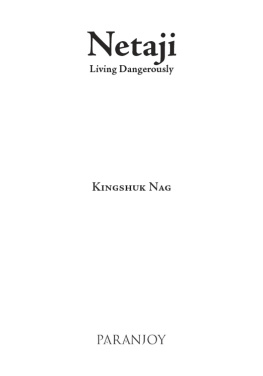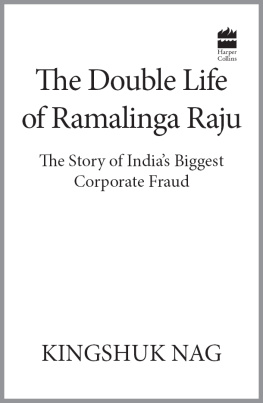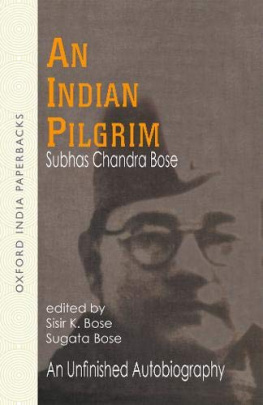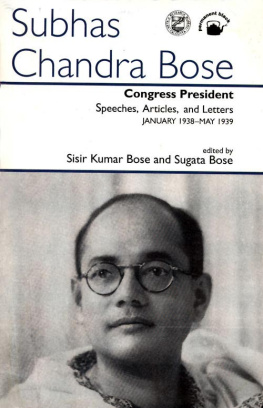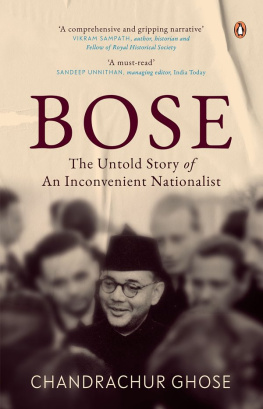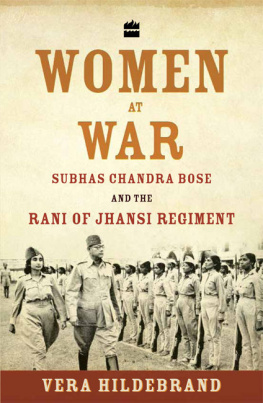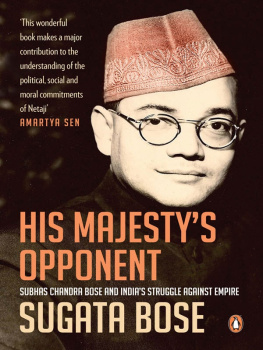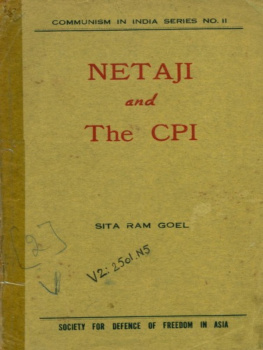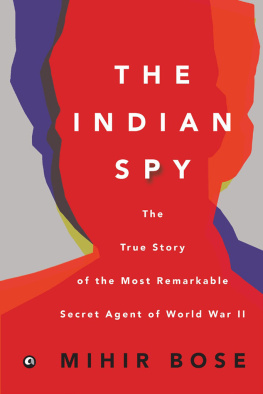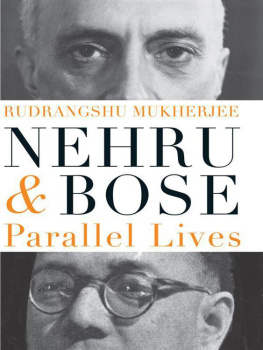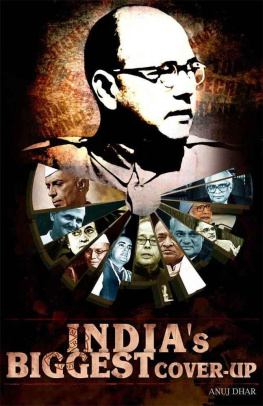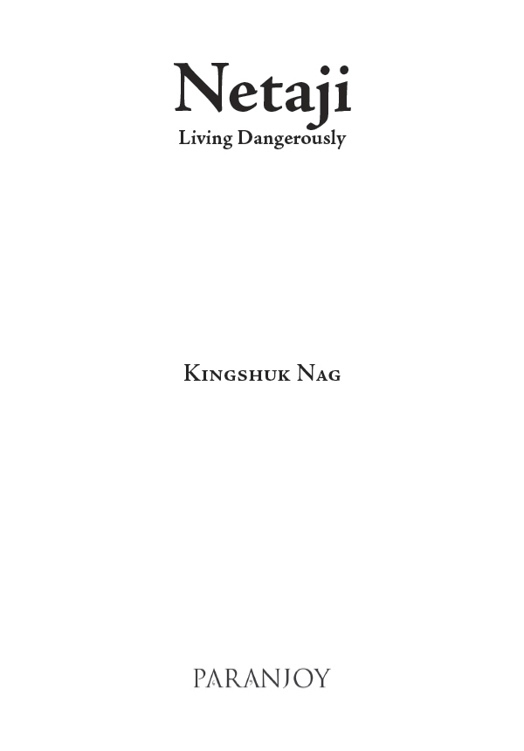In memory of my father, Dr Salil Kumar Nag.
Like many of his generation, he earnestly believed
that under the leadership of Netaji Subhas Chandra Bose,
India would have been a different country
when it gained political Independence.And in memory of my friend and colleague, Sumit Sen,
Resident Editor, The Times of India, Kolkata,
who tried to unravel the mysteries about Netaji with zeal,
till cancer snatched him away suddenly in September 2015.
Preface
Satyameva Jayate, truth alone triumphs, is the national motto of India. But sadly this mottodrawn from the
MundakaUpanishadis often not acted upon. The mystery behind the disappearance of Netaji Subhas Chandra Bose and the diminution of the exceptional role he played in Indias independence movement is a striking example of how truth has deliberately been prevented from triumphing.
But every night has a dawn and this long dark night where Netaji was relegated to the ash heap of history, with the truth of his disappearance perhaps hidden in secret government records, is about to end.
The first salvo has been fired by the Chief Minister of West Bengal, Mamata Banerjee, who bit the bullet and ordered declassification of up to sixty-four files relating to Netaji that were in the custody of the West Bengal state intelligence department. Releasing the files in the middle of September 2015, she said that from a reading of the documents it was clear that Netaji had lived beyond 1945. By doing this she created history because this is the first official statement confirming the survival of Netaji beyond 18 August 1945. Of course, the Justice Manoj Kumar Mukherjee Commission of Inquiry into Netajis disappearance had also said in its report submitted in 2006 that he could not have died in the air crash on that fateful day because there was no evidence of such a crash! But the report was rejected by the Union government in New Delhi. The files opened by Mamata add up to a staggering 12,744 pages and they have now been kept for public viewing at the Police Museum at Kolkata.
The declassification of the files has had a salutary effect: pressure has mounted on the Union government to open up the files in its custodyincluding those in the Prime Ministers Office (PMO). Not only have relatives of Netaji stepped up their campaign but so have other private groups like the Rashtriya Sainik Sanstha (an organization of civilian patriots and more than one lakh ex-servicemen). Retired intelligence officials, their lips sealed even after superannuation, have started speaking out even if in off-the-record conversations. All of which is throwing more light on the Netaji mystery.
On 14 October 2015 talking to thirty-five family members of Netaji who had called on him in a much publicized meeting, Prime Minister Narendra Modi said that he found no reason for the Netaji files to remain secret and announced that paying heed to requests made by Netajis relatives, the Government of India would start declassifying them beginning 23 January 2016. This will be the 120th birthday of the patriot. Modi also said that he would write to foreign governments beginning with Russia in Decemberto declassify any Netaji-related files that they might have in their archives. He said that the other countries to be approached would include the United Kingdom, USA, Japan, China, Singapore and Malaysia. Later Modi tweeted that there is no need to strangle history. Nations that forget their history lack the power to create it. Independent researchers till date have faced huge barriers while dealing with foreign governments. They have repeatedly been told that a government-to-government request might yield better results. But all previous Indian governments have preferred to remain silent. If the current Indian government acts on the prime ministers statement and puts in a request to foreign governments it might well induce the latter to part with information.
Thirteen of the declassified files reveal the shocking fact that Netajis close relatives were subjected to round-the-clock surveillance by intelligence sleuths with their mail being intercepted on a regular basis. This included correspondence received as well as sent out by members of the Bose family. A team of fourteen sleuths were deployed for this purpose. This was an incredibly large and complex operation and had obviously been mounted because the intelligence department was keen to trace Netajis whereabouts. The operation was carried on till the late 1960s, confirming that they believed that he had not died till then. While the government deployed this massive intelligence operation, the official committees set up to investigate the disappearance of Netaji were being encouraged to report that he had died in the air crash, which now seems to not have happened at all.
These declassified intelligence files reveal that the sleuths were searching wide for Netaji and had even been examining a lead that he had escaped from Singapore at the end of World War II in a submarine. They were also trying to figure out whether he had escaped to China and mingled with Mao Zedongs forces. The Chinese angle may have caught the fancy of the intelligence community because close relatives of Netaji were themselves trying to investigate whether he had made it to China. On 5 March 1948, Chow Hsiang Kungg, apparently an Indian official, or perhaps an interpreter who worked out of the Old Secretariat in Delhi wrote to Amiya Nath Bose, son of Netajis elder brother Sarat Chandra Bose informing him that a quick search of Chinese newspapers had not thrown up any leads that the leader was in Nanking (Nanjing). The letter was written in response to a specific query from Amiya. Addressed to his Calcutta (Kolkata) address, it never reached him since it was confiscated by intelligence at the post-office. Adding to the mystery was a report published in the tabloid Blitz on 26 March 1949 that Bose was alive in Red China. A few years later in 1956, Suresh Chandra Bose, another elder sibling of Netaji, wrote about the possibility of his brothers presence in China. In his dissenting report as a member of the Shah Nawaz Committee set up that year to investigate the circumstances of Netajis death but published independentlySuresh wrote that two witnesses had submitted to the Committee that Netaji had made attempts at contacting the Chinese Communists through the Vietnamese Communist leader Ho Chi Minh. They also placed on record that crossing over to Yanan, Chinese leader Mao Zedongs headquarters, was one of the options considered by Netaji. Both witnesses were officers of the Indian National Army (INA)an armed force formed by Indian nationalists in South-east Asia in 1942, subsequently led by Netajiof which Shah Nawaz Khan was also a senior member. Suresh Chandra Bose also cited evidence (that seemed stronger) that Netaji was trying to contact the Russians. In fact he concluded, it was their (Netajis and the Japanese) joint and agreed plan that Netaji would finally move to Russian territory. In accordance with this plan, the Japanese government took Netaji to Manchuria from where he evidently moved into Russian territory.
One of the declassified files reveals a Criminal Investigation Department (CID) report from Howrah that quotes a British and US intelligence filing that Netaji was alive after 1945 and might have undertaken training in Russia. One of the files contains an intercepted letter dated 18 November 1949 written by Amiya Nath Bose to his brother Sisir Kumar Bose that says,for the last one month we are getting this broadcast on the short wave near 16 mm. The broadcast only says Netaji Subhas Chandra Bose

